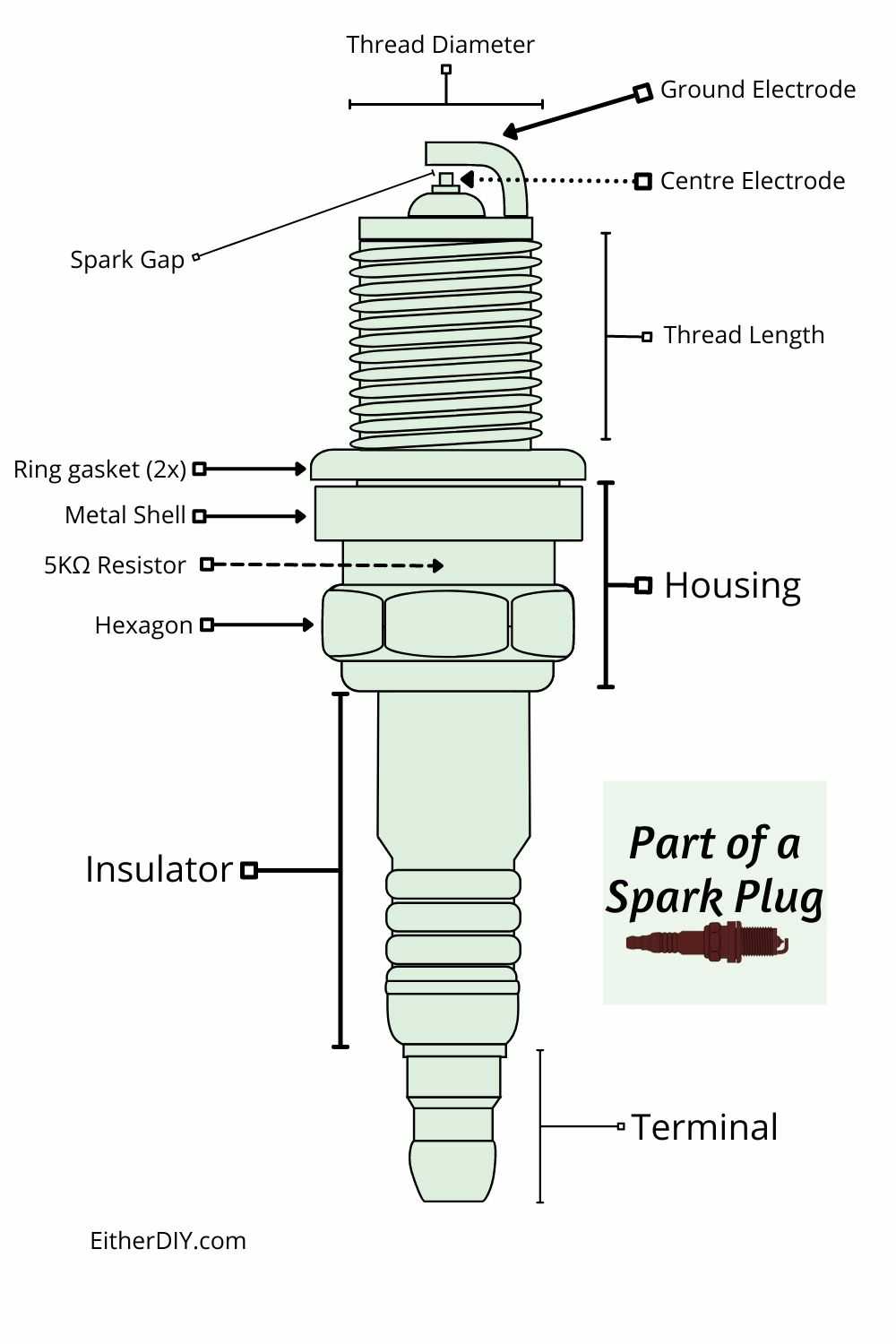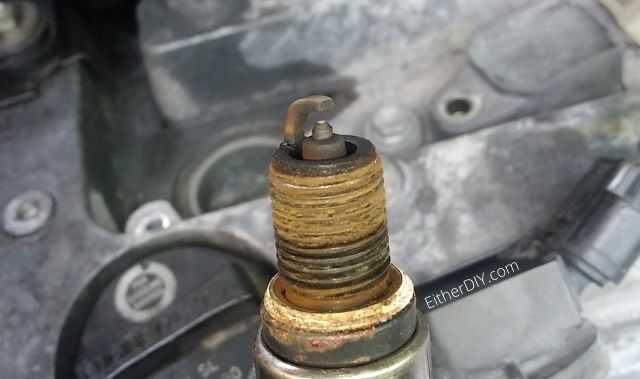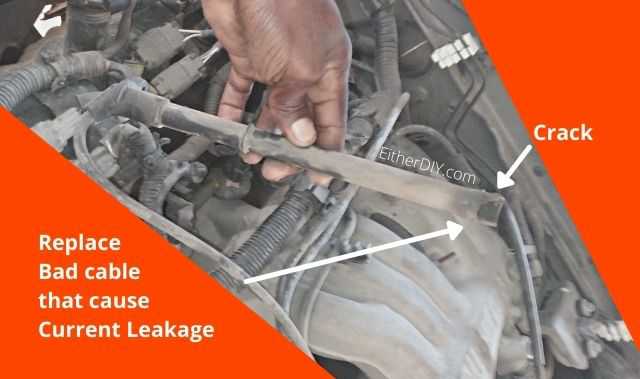Hey DIYer👋
Did you know you need glow plug for diesel engine and spark plugs gas engine?
Let’s see
Do you have an engine or ignition problem: “engine shake”, “rough idle”, “lose power” or “won’t start engine”?Or did you just wait for 72000km on the odometer, that is 4 years of service with a spark plug and you wanted to replace it?
Whatever your reason for visiting here, let’s look at what you need to know about your spark plug.
How do spark plugs work in a car engine?
Internal combustion engines need a system that can ignite the mixture of air and gasoline that is fed into the engine and compressed inside its cylinders. To do this, a high voltage current flows through the spark plug, which in turn generates an electric spark, igniting the mixture and starting the combustion.
When this parameter is not working properly, you will probably have your OBD2 light on with a misfire code. This will also happen with a poor quality spark plug, even if it is new. So always use the right spark plug!
Six qualities of a spark plug
1- A good spark plug must be able to work in all temperature and pressure conditions. It is designed to operate at 20,000 to 30,000 volts and withstand pressures up to 600 psi.
2- It must maintain the correct gap between two electrodes under all conditions.
3- The spark plug must offer a very high resistance to current leakage.
4- It must be completely gas tight. Any leakage of hot gases will disturb the normal equilibrium state of the spark plug by causing such a high temperature that the insulator and the electrode will disintegrate and fall into the cylinder.
5- It must be corrosion resistant.
6- It must have an adequate span in the combustion chamber. The span is the length of the threaded portion that enters the cylinder. If a long-span spark plug is mounted in a short-span hole, it will reduce the combustion chamber and increase the compression ratio. On the other hand, if a short-span plug is inserted into a long-span hole, it will increase the combustion chamber and reduce the compression ratio.
Do you know what the spark plug is made of?
Parts of a spark plug
Spark plugs have electrodes sometimes with tips on the electrodes. These tips can be a range of high temperature metals such as platinum or iridium. Types of spark plugs available today are known as “copper”, “nickel”, “platinum”, “double platinum”, “iridium”, and “silver”.
Main sections of a spark plug.
To be able to operate under the difficult conditions and to match the performance requirements, spark plugs are constructed in three main sections:
The housing: Forms an outer shell that surrounds and supports the insulator, and secures the spark plug assembly to the engine by the ring washer or gasket.
The insulator: Provides an insulating seal between the spark plug housing and engine to prevent any gasses escaping during compression and combustion.
The electrodes: The ground electrode is mounted to the threaded lower section of the housing, which allows electric current to flow through the engine back to the battery.

Housing, Centre shaft (stem), Gasket, Resistor, Insulator, Electrode with copper, Ring gasket (2x), Centre electrode, Terminal, Ground electrode.
how to change spark plugs

Have you ever thought about changing your spark plugs?
If this is your first experience in car repair, I don’t recommend it because it could do you more harm than good. It is better to try the easiest maintenance .
Believe me, there are some cars that are challenging even for a mechanic because of the location of a spark plug or its particularity. For example, the NISSAN VG33 3.3L and FORD 4.6l & 5.4l 3v.
The repair tips I share do not make me responsible for your injury or property damage.
You can follow the tips I share on the home page to guide you in your search.
If you decide to change your spark plugs to solve a problem, be sure of your diagnosis. Because a misfire code can be: the spark plug, a spark plug wire, the ignition distributor or, depending on your engine, an ignition coil. All this problem can make your car engine “shake”, “rough idle”, “lose power” or “won’t start”.
That’s why you must check each element. Let’s see what you need to know about a spark plug wire.
Spark plugs wire
There are different type of spark plug wire
DISTRIBUTED RESISTANCE WIRES: It is the fiberglass impregnated carbon that gives the wires a greater resistance to RFI noise. RFI (Radio Frequency Interference) is an interference that affects an electrical circuit.
MAGNETIC RESISTANCE/INDUCTANCE WIRES: This material is less resistant to the flow of electricity, which means it requires less current to generate a spark. Bad spark plug wire can cause current leakage. Some spark plug wire last for a lifetime of the engine.

The way you handle your spark to connect and disconnect may out- of-order them. With any sign of crack or damage, replace your spark plug wire. Another piece to care about is your ignition coils.
Ignition coils
What are your ignition coils? What are performance or direct ignition coils do?
An ignition coil is a quadrupole that uses the phenomenon of electromagnetic induction to generate a pulse that produces a very high voltage in the secondary winding of its step-up transformer.
The system of direct ignition or coil-on-plug places an ignition coil directly on the top of each spark plug. It’s applying for modern engines. This ignition timing is handled by the Engine Control Unit, based on input from various sensors like CKP or CAS.
Do you want a tip to know if your ignition problem is a coil?
How To Test Ignition Coils?
How do you test an ignition coil easier way posible?
1- Find yourself a code reading service. Ask a friend if it’s not free in your local parts store. Or you can try a tool library.
2- Scan your vehicle. This will give you a code and this code will tell you which cylinder has misfires. For example, it is cylinder 2.
3- Then ask them to erase the code, then simply reverse the coils of cylinder 3 and 2.
4- Drive the car when you see the engine light reappear and read the code again.
5- If you notice a sudden shift of the misfire from cylinder 2 to 3, your coil problem is confirmed, so you just have to change the coil.
6- If the misfire is still in cylinder 2, then it is neither a spark plug problem nor a wiring problem. Finding the problem may lead you to a faulty injector, however, proceed in the same manner as for the coil.
What if it’s an old car with a single coil and it’s outside the distributor?
1- Disconnect all the wiring from the coil.
2- Connect an ohmmeter to the positive and negative pins of the coil. The reading should be 0.5 to 2 ohms.
3- Connect the meter to the positive pin and the main output terminal. The reading should be 6K to 10K ohms.
4- In case in one branch you don’t find any values, know that the coil is the cause of the motor not starting and right to be replaced.
5- If the engine runs but the idle is very irregular, it is not the ignition coil, but perhaps a spark plug wire or a defective spark plug.
After researching how to change the spark plugs for your car model on the internet, if you’re not sure about replacing your spark plugs for the first time.
Here’s a tip to kill two birds with one stone:
💡If your diagnostics are good, call a home repair service and learn from them so you can do it yourself next time.
Since it’s not something you’re going to replace every year, get this car maintenance booklet to help you organize periodic maintenance on your vehicle.
Good luck with your maintenance!
